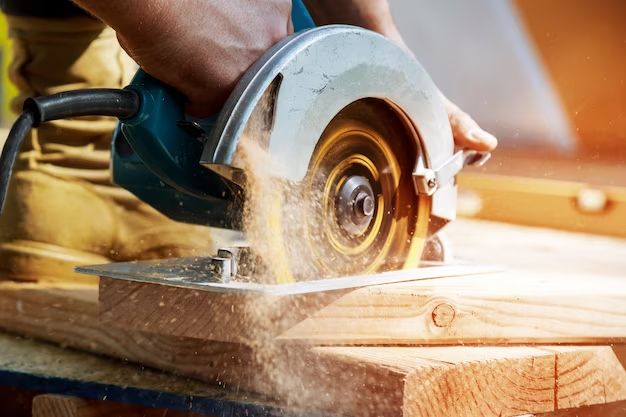Both worm drive and circular saws are popular choices for construction professionals and DIYers. They each have their own unique advantages and disadvantages compared to each other. This article will examine the key differences between worm drive and circular saws to help you determine which type best suits your needs.
Page Contents
What is a Worm Drive Saw?
A worm drive saw has the motor oriented perpendicular to the blade rather than parallel like on a traditional circular saw. This configuration results in more torque and power being delivered to the blade. The motor spins a worm gear that then drives the blade. The increased torque allows worm drive saws to cut through dense and hard materials with less binding or slowdown of the blade.
Advantages of Worm Drive Saws
- More torque and cutting power
- Reduce binding in thick and dense materials
- Can use longer blades for deeper cuts
- Rear handle orientation improves visibility
- Blade on left side makes it easier for right hand dominant users
Disadvantages of Worm Drive Saws
- Heavier and larger so more difficult to transport and maneuver
- Higher cost than circular saws
- Increased maintenance requirements
- Louder operation due to gearing
What is a Circular Saw?
A circular saw has the motor and blade oriented in-line, parallel to each other. The motor directly spins the circular saw blade to make cuts. Circular saws are lighter, more compact, and less expensive than worm drive saws. However, the direct drive means they have less torque and cutting power.
Advantages of Circular Saws
- Less expensive than worm drive saws
- Lighter and more compact for better portability
- Easier for overhead cuts
- Simpler gearing requires less maintenance
- Quieter operation
Disadvantages of Circular Saws
- Less torque and cutting power
- More prone to binding in thick materials
- Typically shorter blade lengths
- Front handle can block view of cut line
Head-to-Head Comparison
Here is a direct comparison of the key specs and features between worm drive and circular saws:
| Feature | Worm Drive Saw | Circular Saw |
|---|---|---|
| Cutting Power | High torque motor provides maximum cutting power | Less torque directly from motor so lower cutting power |
| Weight | Typically 13-16 lbs | Typically 7-10 lbs |
| Size | Bulkier size due to gear housing | More compact and portable |
| Blade Visibility | Rear handle improves visibility | Front handle can block view of cut |
| Cost | Around $200-$400 | Around $100-$200 |
Recommendations for Best Uses
With their distinct strengths and weaknesses, worm drive and circular saws are better suited for certain applications. Here are some recommendations on when to choose each type of saw:
Best Uses for Worm Drive Saws
- Cutting thick stock material like lumber or logs
- Ripping plywood sheets and heavy timbers
- Long straight cuts in framing and decking
- Prolonged use for large jobs
The extra power and torque allow worm drive saws to muscle through dense, thick materials without binding up. Their capabilities make them a favorite of framers and construction pros working with lumber and plywood.
Best Uses for Circular Saws
- General purpose saw for most DIY users
- Lighter cross and rip cuts in thinner stock
- Cutting small to midsize trim and boards
- Quick small jobs where portability is key
For most basic home DIY projects, a standard circular saw will provide enough cutting power. The lighter weight and compact size make circular saws the preferred choice for quick jobs where you need a mobile saw.
Safety Tips
Both worm drive and circular saws are powerful cutting tools that require proper safety precautions. Here are some key tips to use them safely:
- Always wear safety glasses to protect your eyes from debris
- Ear protection helps prevent hearing damage from noise
- Use saw blades specified for your material to prevent kickback
- Avoid binding by supporting long boards and using blade guards
- Unplug saw when making adjustments or changing blades
- Maintain control and resist overextending your reach
Conclusion
Worm drive saws provide maximum cutting torque and power while circular saws offer a lighter and more portable package. Consider how much power you need and what types of cuts will be made. Pro users working with dense hardwoods would benefit most from a worm drive saw. For lighter duty rip and cross cuts, a circular saw presents a cheaper yet still effective option. Being aware of the strengths of each saw type allows you to pick the right tool for your specific cutting needs.
